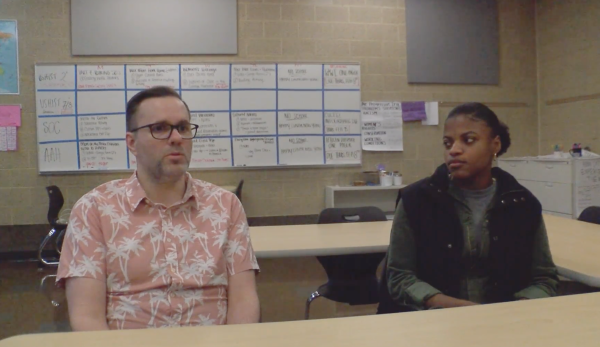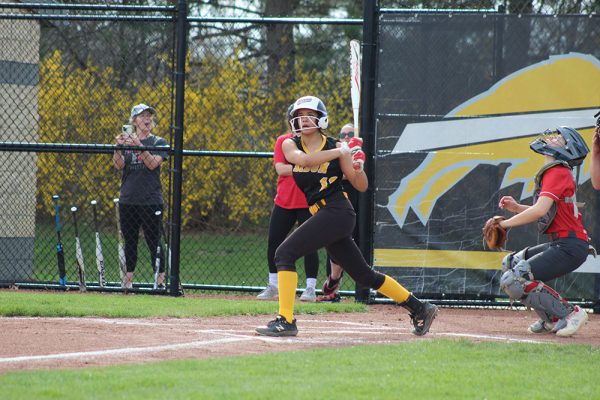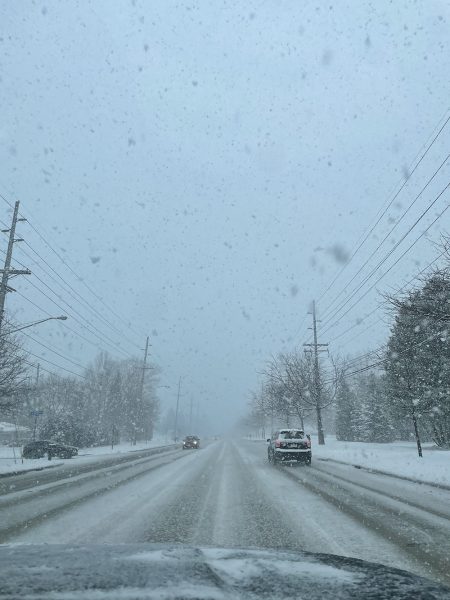Tardies Doubled From Last School Year

Image by Gan Khoon Lay via thenounproject
Based on data provided by the attendance office, there has been a significant increase in the number of tardies this school year.
During the 1st semester of the 2017-2018 school year, a total of 229 students accounted for 1,000 total tardies.
During the 1st semester of the 2018-2019 school year, a total of 352 students accounted for 2,155 total tardies, an increase of 215.5 percent.
Social studies teacher Pam Oglivy explained that her first period attendance has shown a significant change from this school year compared to last school year.
“I would say three out of [the four times per week] that I see them, I have at least five tardies every day [on average],” she said.
“While it may only be five or ten minutes here or there, it adds up,” she added. “If you’re missing five or ten minutes of instructions every day you’re tardy, that adds up.”
Sophomore Avery McShepard described the scene at the attendance office most mornings.
“I get to school every morning around 7:38[am]…7:39[am]…five minutes after the school day starts…,” he said. “I go to try to sign in on the computer and sometimes [it’s] loading slow…[and] there’s always a huge [line] every Thursday because [of the assemblies].”
McShepard added that there are long lines every day, and on Thursday they are even longer.
“Half of [the students] are always mad because they’re late and [they think they’re going to] get a tardy…the [students] are kind of always upset or angry or grumpy, then other [students are] cool because [they’re] really tired,” he added.
Principal Tony Srithai suggested that some teachers did not consistently enforce the attendance policy in previous years.
While it may only be five or ten minutes here or there, it adds up,” she added. “If you’re missing five or ten minutes of instructions every day you’re tardy, that adds up.
— Social Studies Teacher Pam Ogilvy
“Kids would come strolling into class…10 seconds late, 10 minutes late and teachers would just let them come,” he said.
Srithai understands the reason teachers might have done that, but feels that it makes the problem worse.
“It just perpetuates this culture among the students that it’s okay to be late, and…we are trying to…pivot towards [a message that it is] important for [the students] to be in class on time,” he said.
“If a teacher was letting seven or eight kids just stroll in whenever they want every day, and now this year we have asked that teacher to make sure that we’re keeping count of those tardies, that’s going to show itself in the data,” Srithai said.
Even though students have reported to Srithai that the new 7:35 a.m. start time makes it harder for kids to get to school, Srihai also sees kids late on Wednesdays and Thursdays.
“School starts at 8:55 [a.m] on a Wednesday…[and 8:20 a.m] on a Thursday, and we still have kids that are late to those periods,” he said. “Whether the school day starts at 7:35 or the school day starts at 10:00 we’re going to have kids that arrive late.”
Srithai also wonders what percentage of tardies are first period.
If a teacher was letting seven or eight kids just stroll in whenever they want every day, and now this year we have asked that teacher to make sure that we’re keeping count of those tardies, that’s going to show itself in the data.
— Principal Tony Srithai
“I would like to dig a little deeper into the data,” he said.
“[At the beginning of the year,] when we asked teachers what some of their non-negotiables were that they wanted to pursue this year, timely arrival to class was one thing they emphasized,” he added.
“Their feedback was that the sheer volume of students that just are arriving late to class was alarming to them, and we wanted to send the message that getting to class on time is important.”
“We think it’s doable,” he added. “We think five minutes in between class periods is more than enough.”
The current attendance policy, implemented several years ago, has been to send students who come in after the bell rings to Attendance Office Secretary Kathy Kluchar.
While the number of tardies has increased, the number of unexcused absences has decreased by 72.05% from the 2017-2018 to the 2018-2019 school year.
During the 1st semester of the 2017-2018 school year, a total of 275 students accounted for 1,764 unexcused absences. During the 1st semester of the 2018-2019 school year, 157 students accounted for 1,271 total unexcused absences.
When Srithai was asked if he thought that the decrease in unexcused absences is correlated to the increases in tardies, he stated that he was unable to draw a correlation between the two pieces of data.
“It’s really hard for anyone to draw a correlation [between the two sets of data],” he said. “There are so many different variables that impact students being out.”

Brooklyn Hollimon (she/her) began writing for the Beachcomber in the spring of 2019. She enjoys covering school and community events. Outside of the Beachcomber,...
















